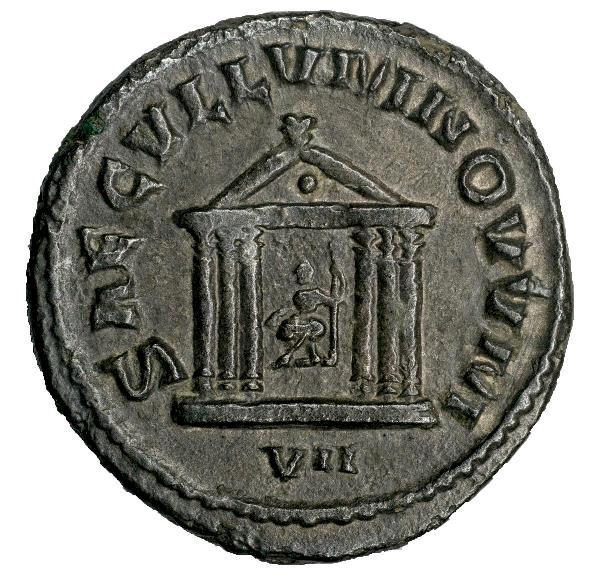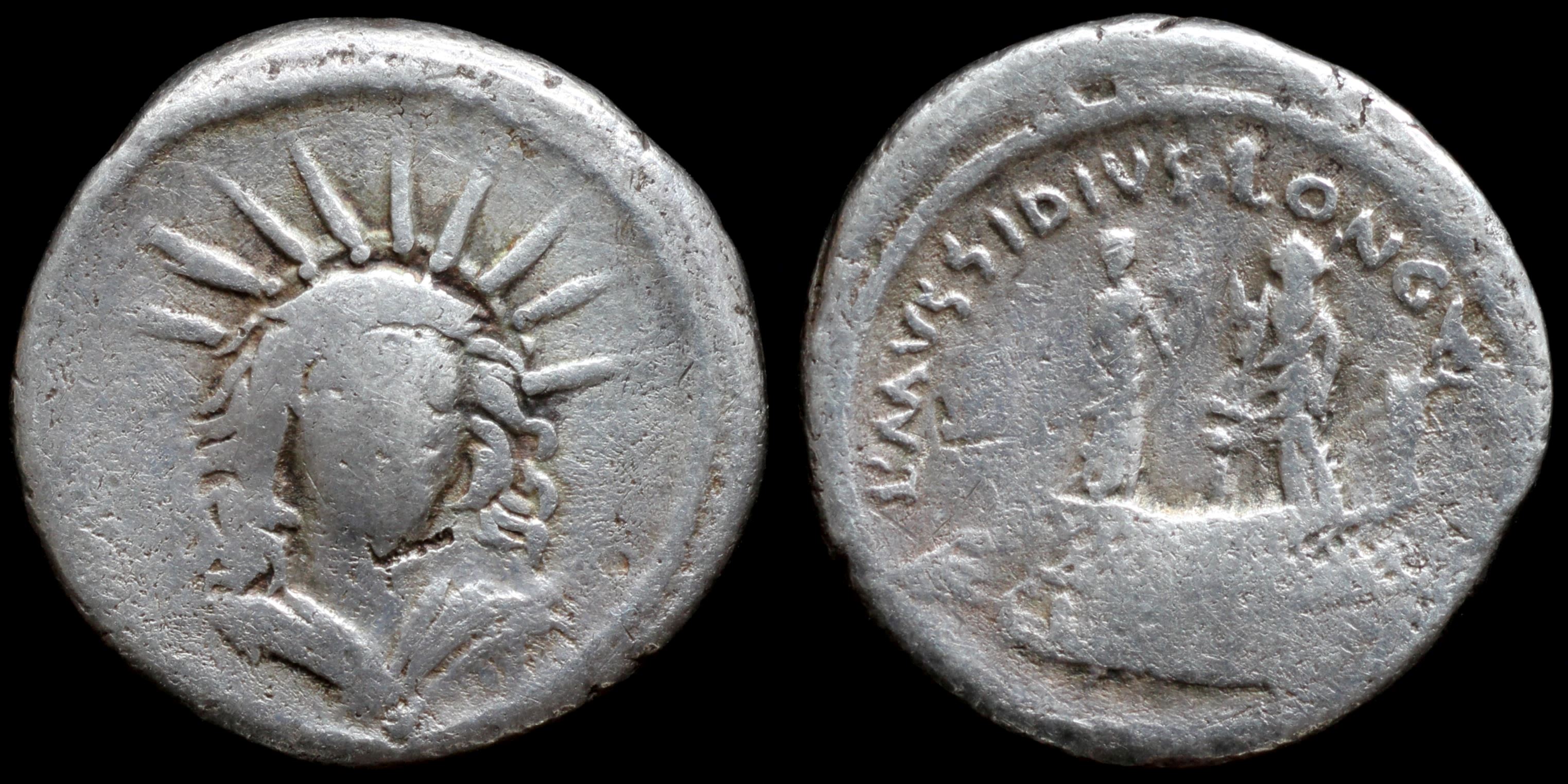Ok, so for some reason this ruler, mint, denomination or collection does not have a description yet - oops!
There are two possible explanations for this:
No description has been written yet
The property is incorrectly named
If the former, patience is key - this site covers thousands of entities, and all must have a manually created description written.
If the latter, try renaming the property - 'Domitian as Caesar' has no description, but 'Domitian' does.
There are two possible explanations for this:
If the former, patience is key - this site covers thousands of entities, and all must have a manually created description written.
If the latter, try renaming the property - 'Domitian as Caesar' has no description, but 'Domitian' does.


Obverse: radiate draped bust of Sol facing slightly right
Reverse: two statues of Venus Cloacina standing on platform, L·MVSSIDIVS·LONGVS / CLOACIN
Diameter:
17 mm
Die Orientation: -
Weight: 3.4 g
Die Orientation: -
Weight: 3.4 g
"The rev. shows the shrine of Venus Cloacina whose fundaments could be seen today on the Forum Romanum in Rome at the South side of the basilica Aemilia. This sanctuary is one of the oldest on the Forum. It is so old that even the Romans didn't understand its real meaning and invented myths to explain it. Cloacina probably is derived from the ancient Latin word 'cluere', meaning 'to purify'.
After the rape of the Sabin women a war broke out between the Romans and the Sabins. The raped women bravely went between their fathers and their new husbands ans so stopped the slaughter. A reconciliation should have been occured at this very place with an expiation and purification (cluere!) ritual. There Myrtles had played an important role. It is said that they were found here and they were used for purification because they should have great purification power. Furthermore they were sacred to Venus, the ancestor of the Romans.
Then at this place Vergina or Virginia, the beautiful daughter of Lucius Virgineus, a plebeian centurio, was killed by him to avoid the shame to become the slave of the tyrannic decemvir Appius Claudius Crassus. Appius Claudius was fallen in love to her and claimed that she was the daughter of a slave who had escaped from him. Due to the rigorous Laws of the Twelve Tables then she too was his property. This murder led to the abolishment of the decemviri (449 BC) and Lucius Virgineus became the first elected tribune. This story probably based on the myth of Lucretia who was raped by the son of king Tarquinius Superbus and because of that commited suicided. This event was the end of the Etruscian kings in Rome and the begin of the Roman Republic.
The sanctuary of Venus Cloacina marks the place where the Cloaca Maxima reaches the Forum and takes the river Velabro. This river was the frontier between the region of the Romans and the Sabins where now the adversary parties have made peace. ... The sanctuary was not roofed but made by a round embracing wall and two cult statues. Originally it was probably the shrine of Cloacina. The origin of her cult and the erection of her sanctuary probably belongs to the the first period of the history of the Cloaca Maxima, either of the time of its construction or of the time of an important renovation even though the tradition ascribed it to Titus Tatius. In the course of time Cloacina was identified with Venus and called Venus Cloacina. In doing so the fact could have played a role that the myrtles were sacred to Venus. So this myth, the reconciliation of the Romans and the Sabins, could be the attempt to explain these unknown connection. ..." from Jochen's Coins of mythological interest
Crawford 494/43, RSC I Mussidia 7, Sydenham 1094, SRCV I 495
